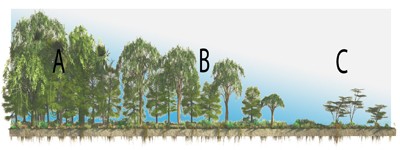What is transhumance?
A) agriculture in dry areas, made possible by irrigation
B) the movement of humans from transition zones of agriculture to more inhabitable
lowlands
C) the movement of livestock from urban regions to rural areas where more grass is
available for animal consumption
D) seasonal movement of livestock to cooler, greener high-country pastures in the summer
and returning them to lowland valleys during the winter
E) agriculture that relies on evapotranspiration
D) seasonal movement of livestock to cooler, greener high-country pastures in the summer
and returning them to lowland valleys during the winter
You might also like to view...
The acquisition of data about Earth's surface from a satellite, spacecraft, or specially equipped high-altitude balloon is
A) GIS. B) GPS. C) remote sensing. D) aerial photography. E) USGS.
Given that climate correlates closely with vegetation, what letter approximates the type of vegetation you would see for an Am climate?
A. A B. B C. C
What geologic event did the Agricultural Revolution coincide with?
a. advance of glacial ice b. retreat of glacial ice c. active volcanism d. formation of Pangaea e. a period of seismic inactivity
The ________ is the world's largest ice shelf
A) Ross Ice Shelf B) Larsen Ice Shelf C) Hawaiian Ice Shelf D) Greenland Ice Shelf E) Juneau Ice Shelf